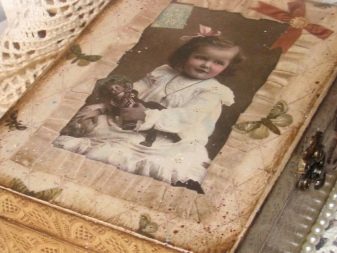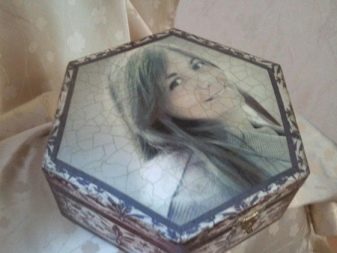Decoupage technique has been known since ancient times. Many people turn to her today. Most often, this technique uses such a simple and malleable material as paper. And we are talking here not only about thin multi-layer napkins, from which beautiful pictures are cut out. Today we will find out what other decoupage paper is and how to choose it correctly.
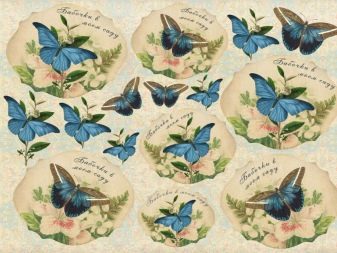
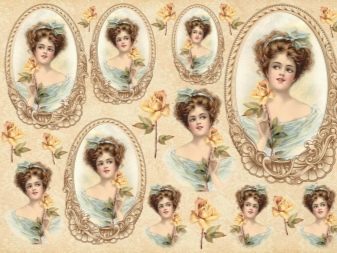
Main types
There are several basic varieties of decoupage paper. Each species has its own distinctive features and characteristics that affect the result of the work carried out, as well as their level of complexity. Get to know the different options for these materials closer.
Decoupage cards
These are special high density materials. Drawings on them can be attached very simply. To do this, cut the pieces to dip for a couple of minutes in a bowl of water. While the paper gets wet, it will first curl into a tube, and then become straight. The element already saturated with water is blotted with a napkin, and then a special decoupage adhesive is applied with a thin and not very hard brush.
Next, the processed and prepared area is applied to the surface of the base and pressed tightly. As a rule, the boundaries of these glued elements stand out strongly, they are immediately visible. There are several ways to get rid of this effect.
- The borders of the pasted element can be very carefully cleaned using a skin. After this, the treatment area will need to be varnished several times.
- You can also give the picture an interesting look of painting, using a two-component craquelure varnish.If you apply it, a barely noticeable transparent film will appear on the image, and the beautiful craquels that appear will make the drawing more noble and spectacular.


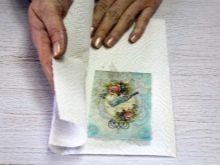
Rice Based Cards
Ideal for blending and special decoupage cards based on rice. Such paper is very thin (thinning it even more is very easy) and translucent. These characteristics are recognized as its pluses and minuses. The edges of such a pasted fragment usually remain almost invisible, but they have to be glued to the lighter parts of the base. The dark bases under such stickers will shine through very much, because of which the pattern will simply “get lost” and become invisible.
The necessary piece is usually gently drawn from such matter, and then it is applied to the surface of the base. With a flat and soft brush, a special decoupage adhesive is required to be applied to the drawing, moving from a central point to the edges so that bubbles do not form.
Rice paper quickly feeds on adhesive, so the print itself will soon stick to the surface of the base. It should be borne in mind that such decoupage paper can have different densities.
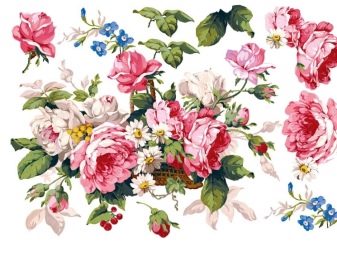
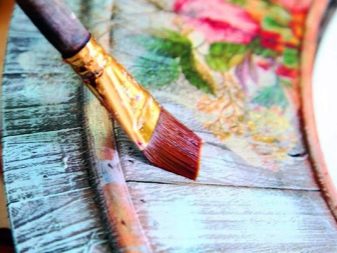
If after gluing a delicate fragment some of its fibers at the borders will still be visible, you can get rid of this drawback with one of the methods of special artistic toning using high-quality acrylic paint.
Napkins
Very often masters use decoupage napkins in their works. In these products for gluing, only the top layer should be selected. The applied fragment creates a very thin picture on the surface of the base, similar to a real beautiful painting. This is one of the main advantages of such paper, but because of it it is quite difficult even for experienced craftsmen to work with this material.
To use these components, you need to tear off the top sheet of the napkin on which the drawing is present. Next, this piece is laid on the base, and then with a flat brush with a small amount of glue, the drawing is quickly leveled. The main difficulties here lie in the fact that such types of paper absorb moisture almost instantly, which is why characteristic folds and irregularities quickly appear on prints and drawings.
Even very experienced decoupage masters may not in all cases be absolutely satisfied with the result achieved. This is especially true for those cases when you have to work with a large, whole napkin.
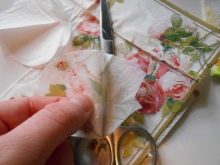

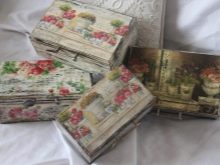
Photo paper
In specialized stores where everything is sold for needlework, you can find a special photo paper for decoupage, which can be applied on a variety of grounds. Such materials have their advantages:
- you can make copies with unusual and original pictures (animals, floral motifs or lace patterns);
- the selected image can be adjusted if desired;
- You can print not only a variety of drawings on photo paper, but also real photographs;
- The image has the ability to print many times, if necessary.
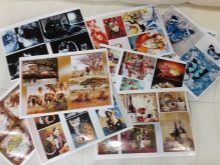
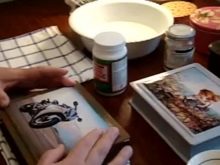
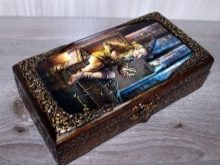
You will learn more about decoupage technique with photo paper by watching the following video.
How to choose?
Choosing the right decoupage paper is a snap.
- It must be whole and of high quality. If you want to make a composition with napkins, then you should choose three-layer copies. They are very thin or more dense. Keep in mind that working with too thin options can be very difficult, although the result is unlikely to upset you.
- You need to consider the basis on which you are going to apply the drawings. If it is a table or chair, it is better to choose more dense materials. The same rice paper should be discarded, because on a dark background it will be completely invisible.
- More reliable and dense are special decoupage cards. However, you need to consider that they cost more, are sold in special stores.In addition, after drawing on the basis of their borders are always very noticeable and you have to resort to all sorts of tricks to hide the flaw.

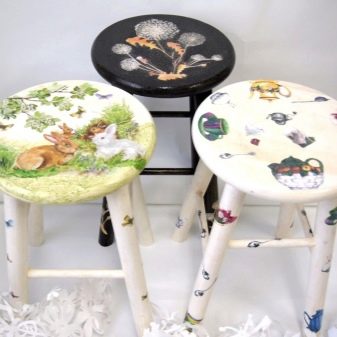
The choice of the ideal paper for blending largely depends on the experience of the master, as well as his skills and accuracy. Someone is easier to work with very thin materials, and someone prefers to work only with thick sheets.
Useful tips and tricks
If you decide to print your favorite picture on photo paper yourself, but at the same time use a conventional inkjet printer, then it is better to carefully fix it before sticking the picture. If we are talking about laser printing, then here you can refuse such operations.
The quality of the drawing on paper should be perfect. Motives should not be too pale and barely distinguishable - there is no sense in such instances.
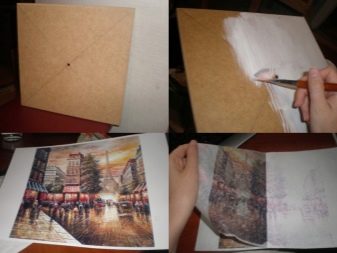
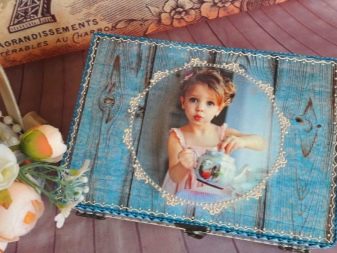
Some masters for decoupage use vellum - tracing paper. Its main advantage is that when glued it is not going to accordion, it looks airy, it is convenient to use it. It is advisable to choose or print for decoupage more rich and colorful drawings. This is due to the fact that such elements after processing with a suitable varnish acquire a more expressive appearance and a beautiful glossy surface, making the base itself more attractive.
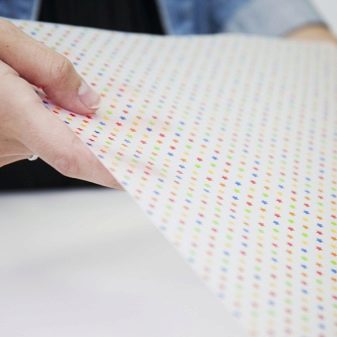
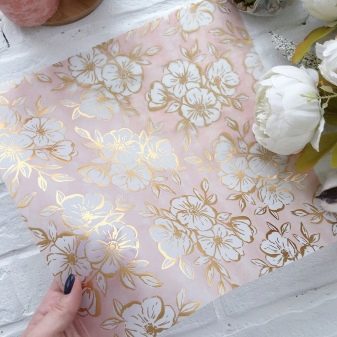
Small irregularities in any pictures and drawings can be removed by contacting with high temperatures. The iron should be placed as close as possible to the paper selected for work. Similarly, you can apply the selected image on ordinary toilet paper. For decoupage, you can use not only drawn or printed pictures, but also your own photos. For example, it may be an old black and white photo. With this element, you can get an interesting decoration in retro style.
